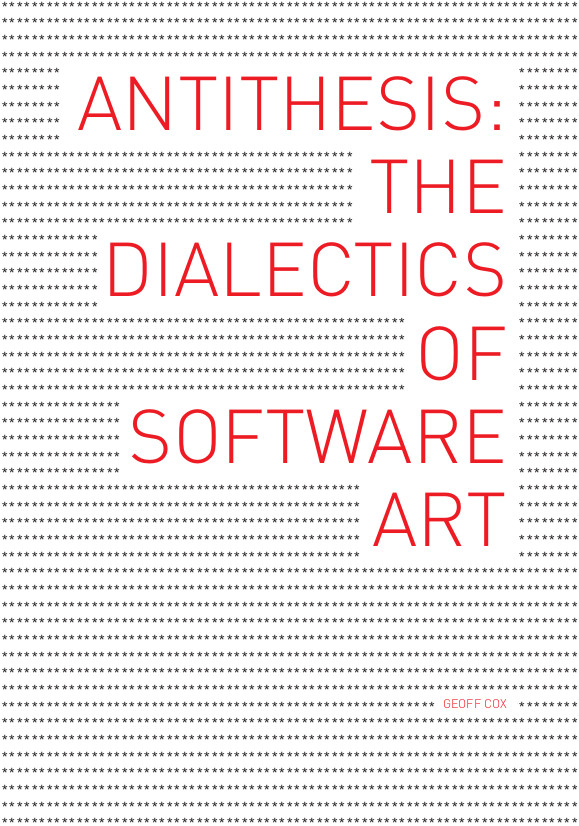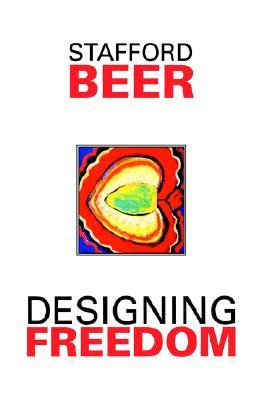Geoff Cox: Antithesis: The Dialectics of Software Art (2006/2010)
Filed under thesis | Tags: · code, software, software art

Software art refers to the production of software as art rather than the use of software to produce art. This thesis situates software arts practice in relation to a dialectical materialist tradition that focusses attention on the site of production and the contradictions within the relations of production. By making reference to post-Marxist theories, it is argued that antagonisms associated with traditional forms of labour have been extended to include the labour of machines and software. Therefore any analysis of the labour involved in making art must recognise the ways in which labour has become more immaterial, collective and communicative. In the case of software art, both the programmer and program can be seen to work, and produce artwork as software. Software art thereby holds the potential to make apparent the contradictions within the relations of production, as well as the potential to be programmed to act in a disruptive manner. That software art demonstrates emergent properties is substantiated by referring to both systems theory and dialectics, that share a common interest in dynamic processes and transformative agency.
Consequently, the term ‘software praxis’ is proposed to characterise the combination of creative and critical activity embodied in transformative action. It is the assertion of this thesis that software art praxis can offer new critical forms of arts practice by embodying contradictions in the interplay between code and action. Contradiction is also embodied in the form this PhD submission takes: it is both a thesis in itself and, like software, ready to express its dialectical potential once executed. This thesis takes the conventional form of academic writing and a program script written in Perl. It collapses form and content by presenting a thesis _about_ software art that is simultaneously an example _of_ software art. Both the text and the program script can be interpreted and acted upon.
The PhD submission includes references to a number of essays written during the registration period, and those that relate closely to the main argument are attached. Also included is documentation of three collaborative projects: the exhibition _Generator_, the publication _Notes Towards the Complete Works of Shakespeare_, and The UK Museum of Ordure’s _Audio Library_ installation. These projects are represented by print-outs of web pages and video documentation on DVD. Although referred to in the text, the projects do not illustrate the thesis but embody its argument. Similarly, the text is not a linked narrative to these projects but an example of software art practice in itself. In form and content, the thesis expresses a dialectics of software art.
A thesis submitted to the University of Plymouth in partial fulfilment for the degree of Doctor of Philosophy
School of Computing, Communications & Electronics, Faculty of Technology
March 2006
Published as a book by Digital Aesthetics Research Center, Aarhus University, Denmark, 2010
GNU Free Documentation License. Version 1.3
ISBN 8791810159, 9788791810152
232 pages
author (thesis)
author (book)
publisher
PDF (thesis, TXT)
PDF (book, PDF, added on 2012-10-13)
Stafford Beer: Designing Freedom (1974)
Filed under brochure | Tags: · cybernetics, systems theory

In this book, Stafford Beer states the case for a science of systems theory and cybernetics.
The collection contains text of six radio broadcasts given in the autumn of 1973 as the thirteenth series of Massey Lectures which were established in 1961 by the Canadian Broadcasting Corporation to enable distinguished authorities in fields of general interest and importance to present the results of original study or research.
Contents: “The Real Threat to All We Hold Most Dear,” “The Discarded Tools of Modern Man,” “A Liberty Machine in Prototype,” “Science in the Service of Man,” “The Future That Can Be Demanded Now”, “The Free Man in a Cybernetic World”.
PDF (updated on 2013-8-10)
Comment (0)Thomas S. Kuhn: The Structure of Scientific Revolutions (1962–) [EN, IT, ES, BR-PT, RU, GR, CZ, CR, CN, RO]
Filed under book | Tags: · history, history of science, non-linear history, philosophy of science, science, sociology of knowledge, theory

“The Structure of Scientific Revolutions is an analysis of the history of science. Its publication was a landmark event in the sociology of knowledge, and popularized the terms paradigm and paradigm shift.
Kuhn’s approach to the history and philosophy of science has been described as focusing on conceptual issues: what sorts of ideas were thinkable at a particular time? What sorts of intellectual options and strategies were available to people during a given period? What types of lexicons and terminology were known and employed during certain epochs? Stressing the importance of not attributing modern modes of thought to historical actors, Kuhn’s book argues that the evolution of scientific theory does not emerge from the straightforward accumulation of facts, but rather from a set of changing intellectual circumstances and possibilities. Such an approach is largely commensurate with the general historical school of non-linear history.”
Publisher University of Chicago Press, 1962
Third edition, 1996
ISBN 0226458083, 9780226458083
212 pages
The Structure of Scientific Revolutions (English, 3rd ed., 1962/1996; updated on 2015-7-10)
La struttura delle rivoluzioni scientifiche (Italian, trans. Adriano Carugo, 2nd ed., 1969, DJVU)
La estructura de las revoluciones cientificas (Spanish, trans. Agustin Contin, 1971/2004)
A estrutura das revoluções científicas (Brazilian Portuguese, trans. Beatriz Vianna Boeira and Nelson Boeira, 5th ed., 1975/1998)
Struktura nauchnykh revolutsiy (Russian, trans. I.Z. Naletov, 1975/2003, DJVU)
Η δομή των επιστημονικών επαναστάσεων (Greek, trans. Β. Κάλφας, 1997)
Struktura vědeckých revolucí (Czech, trans. Tomáš Jeníček, 1997)
Struktura znastvenih revolucija (Croatian, trans. Mirna Zelić, 2nd ed., 2002)
科学革命的结构 (Chinese, 2003)
Structura revoluțiilor științifice (Romanian, trans. Radu J. Bogdan, 2008)

